Then & Now: Ten Years of Residencies at the Center for Book Arts is an upcoming exhibition celebrating two of the Center’s core programs. Among the 50 exhibiting artists who participated in these programs over the last ten years is Natalie Stopka.
Some of her recent suminagashi work, like those shown in the images above will be included in the exhibit. If you find yourself in the New York area, check out Natalie’s work in person. The exhibit will run from April 17th until June 27th.
Last week’s post focused on Natatlie’s technique and process for natural dyes. This week’s post will focus on her work with marbling and suminagashi.
Can you discuss your techniques for marbling; what type of size and pigment do you prefer to work with?
I prefer to work with caragheenan and acrylic pigments when marbling. We undertook a side-by-side comparison of caragheenan and methyl cellulose in a marbling workshop I taught, and for me the clear champion is caragheenan.
Of course, I have written repeatedly about my preference for natural and historically founded materials, but in marbling I use modern synthetic pigments and surfactants. What can I say? They work like a charm – but one day I would like to expand my practice to include earth pigments. It would be very satisfying to create images of stone formations from pulverized stone.
I am often asked if natural dyes can be used for marbling, but by definition dyes are water soluble, so working around that would be too complex a process to be practicable. However, it is quite handy to marble on naturally dyed paper or fabric, as both the marbling substrate and most dyes (adjective dyes) require mordanting as a preparatory step. And whether you work with natural or synthetic pigments, the natural dyes give a beautiful base tone.
Suminagashi is my escape from the detail-oriented aspects of bookbinding which demand focused hand work. Because suminagashi developed within the compass of Buddhism, the entire approach is at odds with western bookbinding and marbling. Rather than formulate a plan for what each print will be, I can work intuitively. I find that allowing the work to guide me rather than the reverse is very freeing and expressive. To do this I stick to traditional Japanese washi, sumi ink and brushes, a few experimental ingredients, and Don Guyot’s sumifactant.
You’ve marbled a variety of materials including paper, silk and linen. What unique properties do each of these materials offer and what challenges, if any, do you find?
The only challenge in using a variety of materials is getting to know each one, and finding some dependable papers and fabrics with the right quality of absorption. The biggest variable in the range of fabrics I use is the crispness of the print each produces. A tight, even weave like silk haboti picks up a very crisp image while a slubby, loosely woven linen makes the image appear more ‘pixelated’.
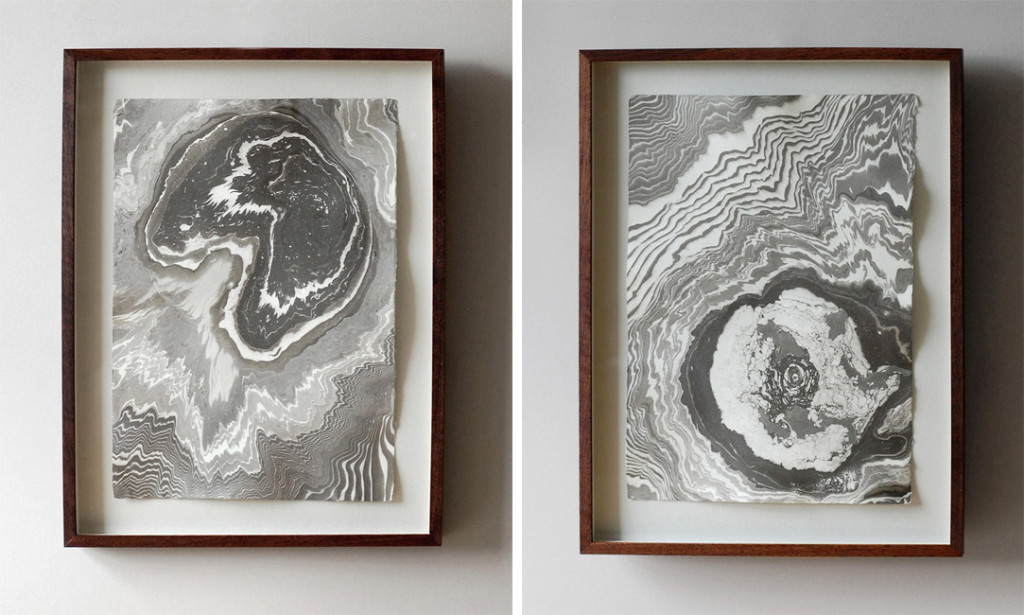
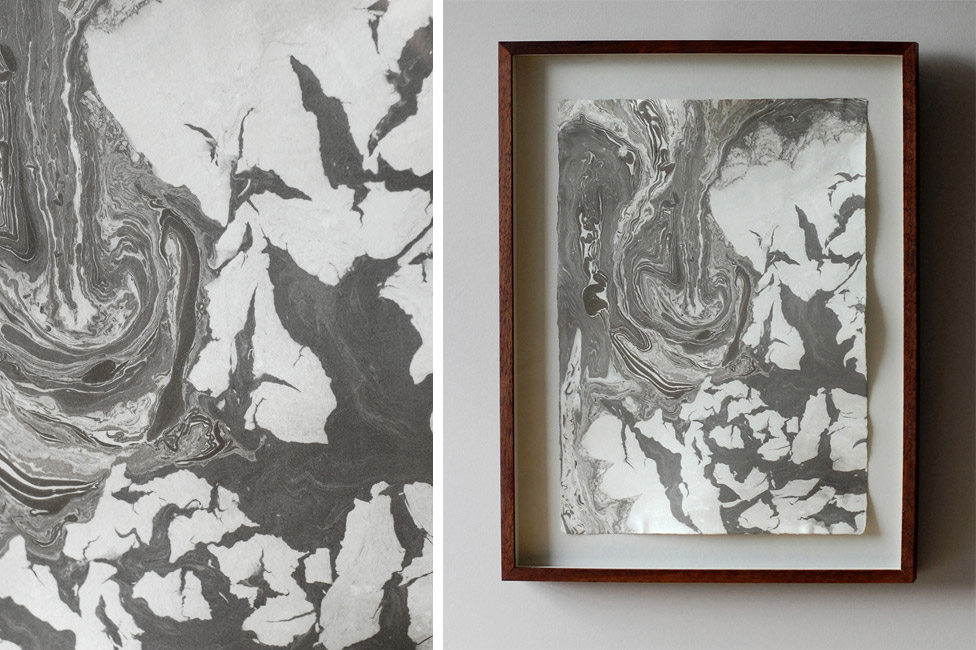
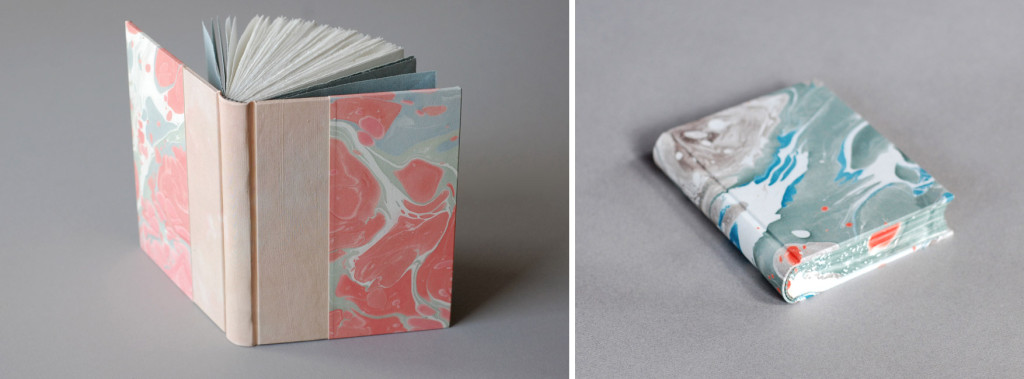
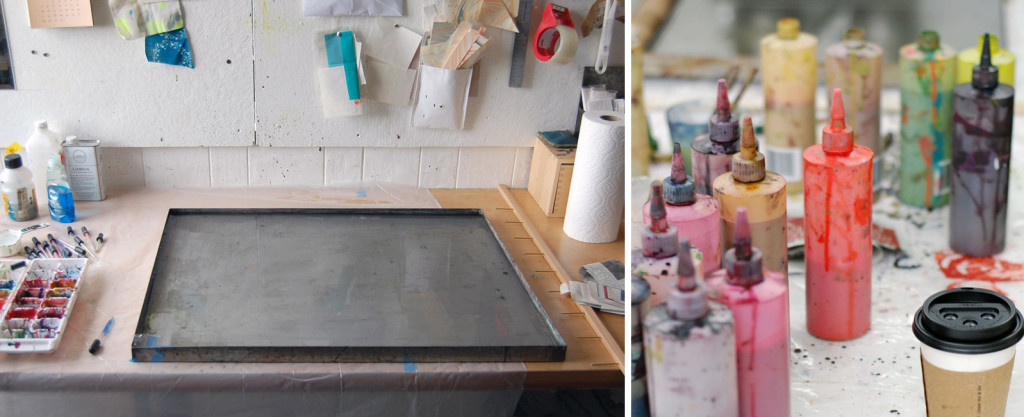
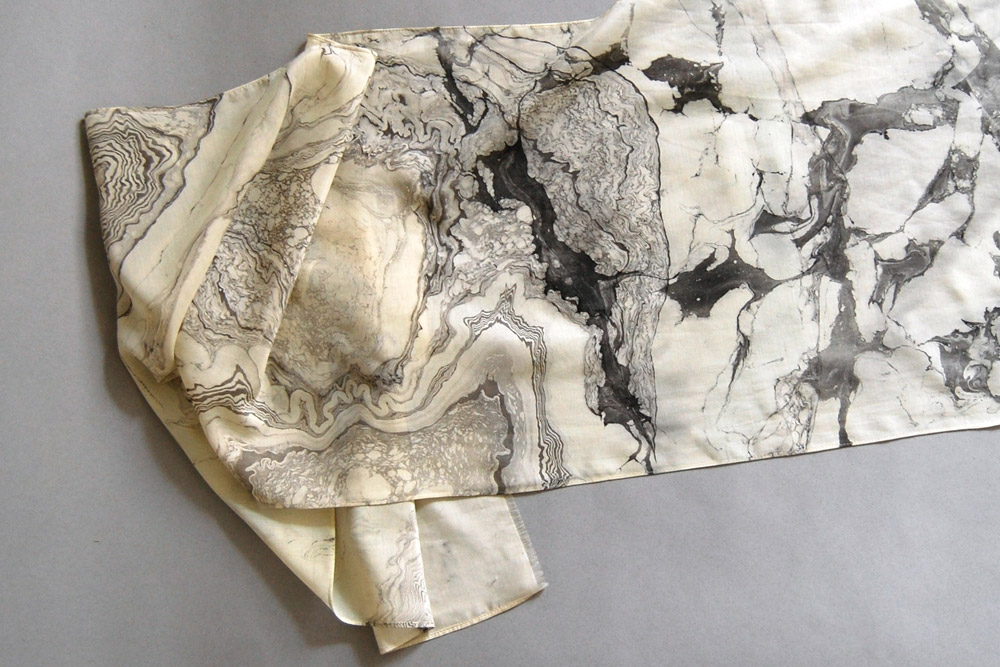
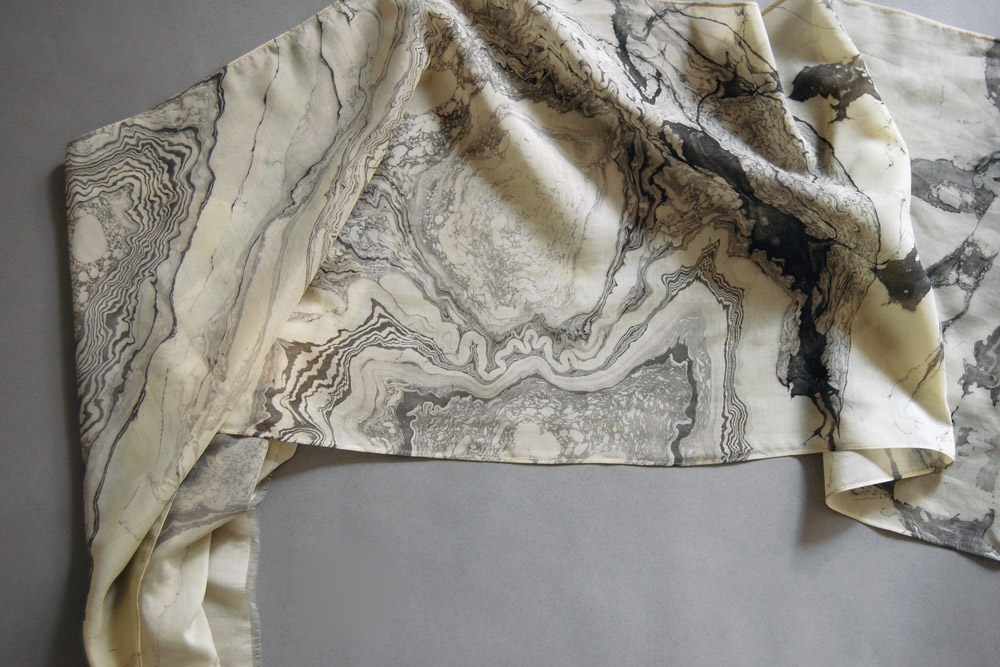

such beautiful work. thanks for posting Erin.
This marbling is so, so beautiful! The black ink marbling looks like topographical maps or swirling clouds over the earth.